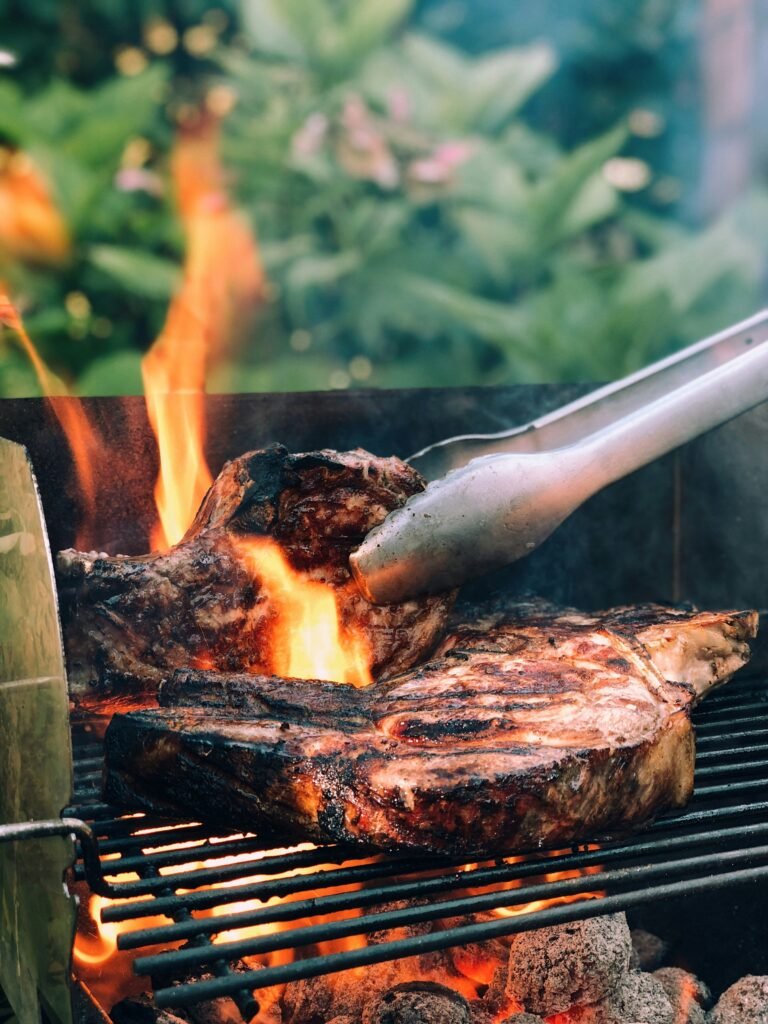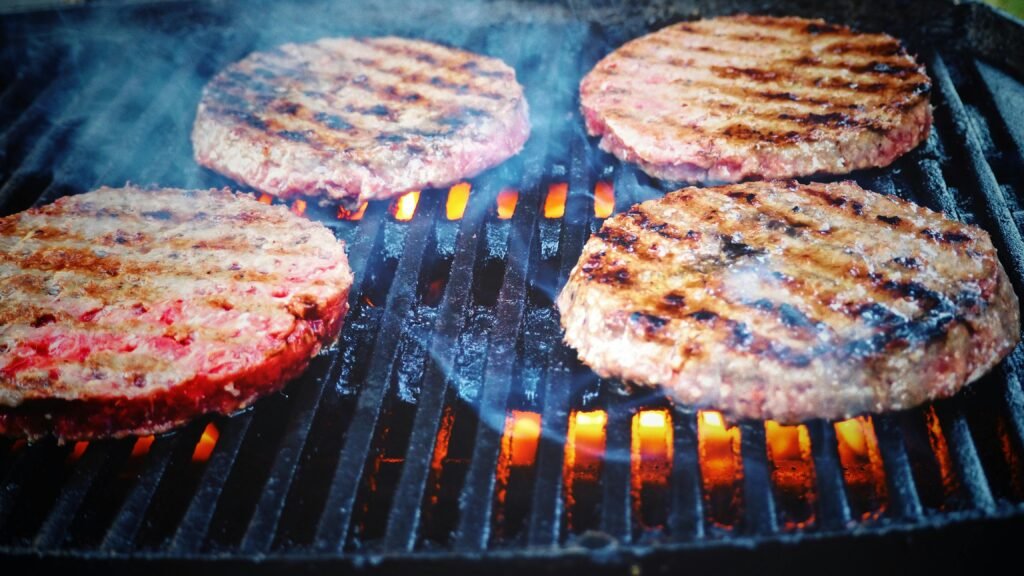Have you ever found yourself craving that perfect rack of smoked ribs, only to wonder how on earth you’d go about making them yourself? We’ve all been there, pondering if we should leave such culinary wonders to the professionals. The good news is that with a bit of patience and the right know-how, we can savor the smoky goodness right from our own backyards. Let’s talk about how we can craft our very own smoked ribs, transforming a simple outdoor affair into a lip-smacking feast.
Understanding the Basics of Smoking Ribs
Smoking ribs is an art that dates back centuries, a method that combines low heat and smoke to bring out incredible flavors. We often think of it as a technique reserved for pitmasters, but it’s really accessible to anyone willing to roll up their sleeves. Let’s start by exploring what smoking actually means and why we need to take it slow and low.
What is Smoking?
In smoking, we use indirect heat and wood smoke to flavor and cook the meat over an extended period. It’s like letting a pot of stew simmer all afternoon—the longer it goes, the better it gets. For ribs, this means we will cook them at a low temperature to allow the smoke to infuse deeply into the meat. It’s a gentle process that enhances flavors and tenderizes the meat.
Why Low and Slow?
The phrase “low and slow” isn’t just a hip culinary catchphrase; it’s the golden rule in smoking. By keeping the heat low, we allow the smoke to penetrate the meat without drying it out. The slow process ensures that the connective tissues break down, making our ribs fall-off-the-bone tender. We might want to rush the process when we’re hungry, but patience is truly key here.
Selecting Your Ribs
Before we get into the nitty-gritty of seasoning and smoking, we need to talk about the star of the show—the ribs themselves. Depending on what we desire in terms of flavor and texture, the type of ribs we select can make a big difference.
Baby Back vs. Spare Ribs
When it comes to ribs, we generally have two options: baby back ribs and spare ribs. Baby back ribs are smaller and leaner, coming from the upper part of the ribcage. They cook slightly faster and are often tender. Spare ribs, on the other hand, are meatier and come from the lower ribcage, requiring a longer cooking time but rewarding us with rich flavors.
Here’s a quick comparison in table form to help us choose:
| Type of Rib | Characteristics | Cooking Time | Flavor Profile |
|---|---|---|---|
| Baby Back Ribs | Smaller, leaner | Faster | Mild and tender |
| Spare Ribs | Larger, meatier | Longer | Rich and hearty |

This image is property of images.unsplash.com.
Prepping Our Ribs
Preparation is where the magic begins. Prepping our ribs correctly can set us up for success in the smoking process. It’s not complicated, but it’s vital to get it just right.
Removing the Membrane
If we want tender ribs, removing the membrane from the bone side is crucial. This membrane can prevent seasoning and smoke from penetrating the meat. To remove it, we slide a knife under the edge, grab it with a paper towel for a good grip, and peel it back. It might be a bit stubborn, but it’s worth the effort.
Seasoning: The Heart of Flavor
Seasoning is our opportunity to layer flavors before we hit the smoker. Whether we favor a dry rub or a marinade, the choice is ours. A classic dry rub generally contains a blend of salt, sugar, paprika, cayenne pepper, and other spices. This not only adds a savory kick but caramelizes beautifully during cooking. If using a marinade, it might include elements like vinegar or Worcestershire sauce for added depth.
Here’s a simple dry rub recipe we can start with:
| Ingredient | Measurement |
|---|---|
| Brown Sugar | ¼ cup |
| Paprika | 2 tbsp |
| Black Pepper | 1 tbsp |
| Sea Salt | 1 tbsp |
| Garlic Powder | 1 tbsp |
| Onion Powder | 1 tbsp |
| Cayenne Pepper | 1 tsp |
We mix these ingredients thoroughly and rub generously on all sides of our ribs, letting them rest for at least an hour or overnight to absorb the flavors fully.
Choosing the Right Wood
One of the defining characteristics of smoked ribs is the type of wood we use. Each wood comes with its own unique flavor profile, contributing to the final taste.
Wood Selection for Smoking
Our choice of wood can enhance or overpower the ribs, so selecting the right type is crucial. Fruity woods like apple and cherry impart a sweet, mild flavor, while hickory and mesquite offer a more robust, smoky profile. Here’s a quick guide:
| Wood Type | Flavor Profile | Best For |
|---|---|---|
| Apple | Sweet and mild | Pork, poultry |
| Cherry | Slightly fruity and sweet | Pork, dark meats |
| Hickory | Strong smoky flavor | Beef, pork ribs |
| Mesquite | Very strong, earthy | Beef, rich meats |

This image is property of images.unsplash.com.
Setting Up the Smoker
Now that we have our ribs seasoned and wood selected, it’s time to get our smoker ready. Ensuring it’s set up properly can make a world of difference in our final product.
Temperature Control
The ideal smoking temperature is between 225°F and 250°F. It’s important to keep this consistent throughout the process, which can take between 5 to 7 hours depending on our rib choice and thickness. If our smoker has a water pan, filling it can help stabilize the temperature and keep the air humid, which is crucial for moist ribs.
Getting the Right Smoke
When smoking, we aim for a thin, blue smoke rather than billowing white clouds. The right smoke means our wood is burning cleanly, imparting flavor without bitterness. Adjusting our vents and ensuring good airflow helps maintain this delicate balance.
The Smoking Process
With our smoker prepared, we’re ready for the main event—smoking the ribs. It’s a journey, not a sprint, so let’s embrace each step.
Placing the Ribs
We place our ribs bone-side down on the grates, spacing them out to allow smoke and heat to circulate evenly. This helps the meat cook consistently on all sides.
The 3-2-1 Method
One popular technique we might consider is the 3-2-1 method. This is particularly effective for spare ribs and ensures a tender, flavorful result.
- Three hours unwrapped: For the first three hours, we smoke the ribs unwrapped, allowing them to absorb as much smoke as possible.
- Two hours wrapped: Next, we wrap the ribs tightly in aluminum foil with a liquid of our choice—like apple juice or beer—to braise and soften the meat.
- One hour unwrapped: Finally, we unwrap the ribs and pop them back onto the smoker for one last hour. This step allows the bark to firm up, producing that coveted crisp crust.
Basting and Glazing
As we near the end of smoking, it’s time to consider basting or glazing. A hearty barbecue sauce brushed on during the last 30 minutes can create a sticky, caramelized finish. Alternatively, we might prefer a simple glaze with honey or molasses for a subtler sweetness.

This image is property of images.unsplash.com.
Monitoring and Mastering
Throughout this process, our senses should be on alert. Checking the ribs for tenderness is a skillful practice, and here’s how we do it.
The Bend Test
When our ribs reach that six-hour mark, we can perform the bend test. By gently lifting the ribs with tongs from one end, we should see the middle bow slightly and cracks forming on the surface. This is a good indication that the desired tenderness has been achieved.
Internal Temperature
While the bend test is crucial, confirming the internal temperature ensures safety and ideal texture. We aim for an internal temperature of around 190°F, which assures us that the collagen has sufficiently broken down.
Serving Our Masterpiece
After this labor (of love) and dedication, we finally get to indulge in our creation. But presentation and pairing can take our ribs from good to great.
Resting the Meat
Allowing the ribs to rest for about 15 minutes after removing them from the smoker lets the juices redistribute, promising every bite is as flavorful as possible.
Cutting and Presentation
To present, we slice the ribs between each bone, ensuring we’re gentle to keep the glorious bark intact. Arranging them on a platter with sprigs of fresh herbs adds a touch of elegance to our rustic creation.
Perfect Pairings
What complements a rack of smoked ribs like a cold drink and some classic sides? Tangy coleslaw, baked beans, and cornbread are more than just sidekicks; they’re essential partners. And let’s not forget a well-chilled beverage—whether that’s an icy beer, a robust red wine, or a sparkling cider for a touch of fizz.
Troubleshooting Tips
Like any cooking endeavor, things might not go perfectly. That’s okay—mistakes are stepping stones to mastery. Here are some common issues we might encounter and how to tackle them.
Ribs Too Dry
If our ribs turn out dry, it’s often due to cooking them at too high a temperature or too long. Next time, we can try maintaining a lower temp and ensuring there’s enough moisture in the smoker. Using a mop sauce during the unwrapped phase could add extra moisture as well.
Lack of Smokiness
Sometimes the smoke flavor doesn’t penetrate as deeply as we’d like. This could be due to improper airflow or too little smoke at the beginning. Ensuring thin, blue smoke throughout the process can help develop a fuller smoky taste.
Uneven Cooking
If parts of the ribs are overcooked while others are underdone, it might be due to hot spots within the smoker. To combat this, we can rotate the ribs during cooking or use a heat deflector to balance out the temperatures.
In the end, smoking ribs is as much a journey of flavor as it is an act of patience and perseverance. Rediscovering this age-old technique gives us not just a delicious meal but a culinary experience to savor and share. So, let us embrace the smoke and sizzle, relishing in the blend of spices and the slow whisper of applewood. Here’s to many more afternoons spent with laughter and ribs in our backyard sanctuaries!



